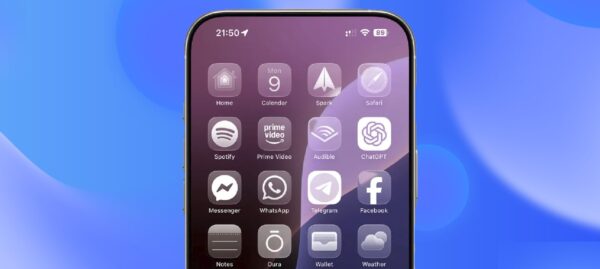How to Build an Application Modernization Strategy for Native to Cross-Platform Migration
Guilherme Rodrigues | Jul 29, 2025

Chances are, you’re familiar with the term ‘Minimum viable product’. Colloquially abbreviated to ‘MVP’, these three words have taken the product development and lean startup world by storm for years.
And for good reason, too. Working with an MVP brings a whole host of benefits — it creates a framework for releasing new products quickly, without getting bogged down in the features that are nice, but not necessary, for your initial release.
An MVP is a fantastic learning opportunity; a chance to stress-test your app’s concept, relevance and — yes — viability with genuine users.
But it’s the word ‘viable’ that also leads a lot of app owners and developers to stumble. Here’s why.

When ‘viability’ is your goal, you risk setting the bar too low. You risk straying into subjective territory, too — what you’re sure your app needs to succeed might be different to your co-founder, or to the people you’re actually designing for.
Let’s unpack each of those challenges in a little more detail…
There’s a delicate balance to achieve when designing your MVP. Yes, you want it to be minimal — that’s how you get to market quickly and gather feedback. But you need to understand what ‘minimal’ means in this context.
When used alongside ‘viable’, many app owners mistakenly assume a barebones app that simply “gets the job done” will suffice. But it won’t.
Think of it this way: your MVP needs to be picked up, used, and enjoyed by your audience. You don’t stand to learn very much at all if no-one comes back after their first session. And focusing too much on viability is an easy way to lose track of what really matters: shipping a product that users want to engage with.
It’s easy to go overboard when developing your app’s MVP. You want to make sure your users have everything they need, but remember: you don’t need to deliver everything at once.
We’ve seen clients in the past who hesitate on launching their MVP, for fear that they’ve overlooked a “viable” feature. That’s where the hazy definition of ‘viable’ causes trouble again. Yes, it’s viable and we could build it now — but should we, and why?
Reset your compass to its true north: your users’ needs.
And you’ll find that process much easier when you stop thinking so hard about viability, and start assessing the value of each feature instead.
Your app’s goal is simple: solve a user need, and do so in a way that’s engaging and delightful.
Focusing on value allows Cheesecake Labs to achieve that straight out the gate with your MVP. Our team looks at your users, what they want, and the issues they have. We learn this during our Product Definition Phase, where we explore your app idea in the context of your users, your business goals, and the market.
We’ll ask:
Knowing this helps us create a strategic product roadmap for your app — a roadmap that starts with your MVP.
We get an understanding of what features are most important and how best to deliver those features. What you get in return is an MVP that’s not just the simplest version of what you have to offer — it’s what’s essential for a successful launch.
Every successful app is user-centric and provides value to those users. Lose sight of who you’re designing for and why, and you’ll quickly stray off-course. But at Cheesecake Labs we build delightful digital products that add value for your business, too.
As we said before, a ‘minimum viable’ product offers little by way of learning opportunities or business-critical benefits. Starting with value in mind, however, unlocks so much more:
Risk is inherent when launching a new app. Risk of failure — financially, reputationally, or otherwise — is something to consider and mitigate against.
Focusing on value is how you do that.
When you strive to add value above all else, you’ve got a better chance of resonating with users. You aren’t throwing ideas or innovations against the wall and seeing what sticks. You’re launching your app with a plan and feature set that’s been well-explored and validated, at least in part, during your Definition phase.
The value proposition of an MVP is pretty simple: start small with your app and provide the features your users would value most. That, of course, is the first step of a much longer journey.
Once you release your value-driven app into the wild, you’ll start learning right away. User feedback and behavior will tell you if your initial release hit the mark or not — and why. This is all essential insight, and will continue to add value in the total lifecycle of your app.
Think of your ‘minimum valuable product’ as a V1 of your ‘final’ product, not as a precursor or something altogether disconnected. It’s the foundation from which you’ll keep on building; eliminating guesswork and progressing with a more informed, more accurate, budget and runway.
We get it: your app is a labor of love. It will be for us too, if you partner with Cheesecake Labs. And when you’ve poured your heart, soul (and months of effort) into a product, you want it to be everything you had imagined.
Or do you?
Trying to deliver everything, right away, is the enemy of the ‘minimum valuable product’. It can paralyze your progress; overwhelming your roadmap and requiring your launch date to be pushed back (and back, and back…).
But when you focus on what’s essential to deliver value, then everyone’s a winner. Your users get the app they need to solve their problems today. Your investors and other stakeholders know why we’ve shipped what we’ve shipped, and have a clear vision of where we’re headed next.
And, guess what, when things do need to change — as they will — those changes are painless to make. Your MVP can respond to changing user needs, new entrants to the marketplace, new technologies that become available, and so on. Better still, you can do it from a place of positivity — you’ve overcome any fears of failure, because you launched ready to learn.
You could say that your MVP sets the tone for your product’s future success. Start off on the right foot — by prioritizing value for your users and your business — and you’ll carry that ethos with you throughout the rest of the journey.
Because application development is a rinse and repeat cycle, you should always build, measure, and learn. Even half a decade later, your app will never be static; there will always be pivots and potential to Optimize.
“Why?” is a question we associate with value: “Why should our MVP/our app have this feature, today or in the future?”
Asking “What?” first risks too great a focus on what’s possible or what could be built, rather than why that matters.
If you’re ready to ask “Why?” and put the ‘value’ in MVP, then so are we. Get in touch with the Cheesecake Labs team today and let’s discuss first steps for your app development.

Jeremy Stephan is no stranger to building digital products. In fact, he's worked with Disney, NBC, Mercedes-Benz, HotelTonight, and many other companies in helping to guide them through the app design and development process. Jeremy has led client engagement in the digital space for over 10 years and served as a mentor within the TechStars network.

Caio Luz | Jul 25, 2025

